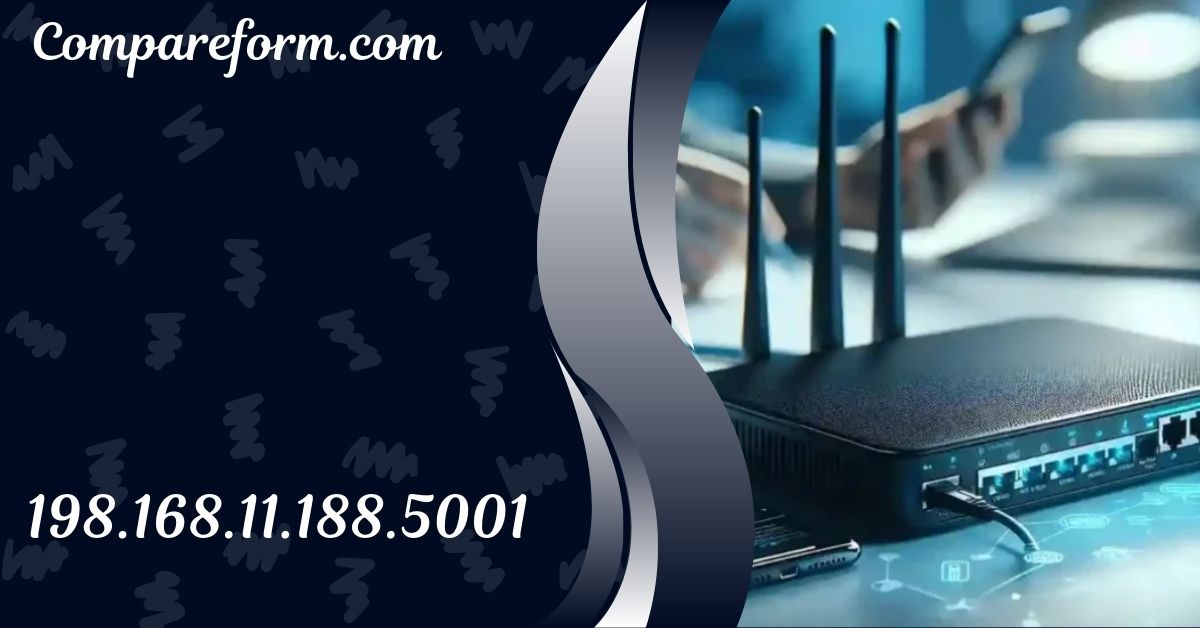Understanding 198.168.11.188.5001: A Comprehensive Guide
In today’s digital world, network addresses play a crucial role in managing and accessing devices connected to the internet. One such address, 198.168.11.188.5001, is vital for both novice and experienced network administrators alike.
This article aims to provide a detailed overview of this specific address, its significance, and practical usage in network setup and control. By the end, you will have a comprehensive understanding of 198.168.11.188.5001, ensuring you can effectively manage your network.
Introduction to IP Addresses
What is an IP Address?
An Internet Protocol (IP) address is a unique identifier for a device on a network. It functions as a postal address for devices, allowing them to send and receive data. IP addresses are essential for routing information between devices, enabling communication over the internet.
Types of IP Addresses
There are two main types of IP addresses:
- IPv4: The most common version, consisting of four groups of numbers (e.g., 192.168.1.1).
- IPv6: A newer version designed to replace IPv4, allowing for a significantly larger address space.
The Importance of Private IP Addresses
Private IP addresses, like 198.168.11.188, are used within local networks. They are not routable on the internet and are primarily used for internal communication. Understanding how these addresses function is vital for network configuration.
Understanding 198.168.11.188.5001
The Structure of the Address
The address 198.168.11.188.5001 can be broken down into two parts:
- 198.168.11.188: This is the private IP address.
- 5001: This is the port number associated with the IP address.
What Does 198.168.11.188.5001 Represent?
198.168.11.188.5001 is typically used as a gateway for accessing a router’s configuration interface. The IP address identifies the router on a local network, while the port number specifies the service or application running on that router. This combination allows network administrators to manage the router settings effectively.
Why Is 198.168.11.188.5001 Important?
For anyone managing a network, understanding 198.168.11.188.5001 is crucial. It directly impacts how users can access and modify router settings, affecting overall network performance and security. Being familiar with this address ensures smoother network operation and minimizes potential issues.
The Role of Ports in Network Communication
What Are Ports?
Ports are communication endpoints in a network. Each port is associated with a specific service or application, enabling multiple processes to run simultaneously on a single IP address.
Commonly Used Ports
Some commonly used ports include:
- 80: HTTP
- 443: HTTPS
- 22: SSH
- 21: FTP
Significance of Port 5001
Port 5001 is often used for various applications, including streaming and web services. In the context of 198.168.11.188.5001, it typically indicates access to a specific router configuration interface or management service.
Accessing the Router via 198.168.11.188.5001
Steps to Access Your Router
Accessing your router through 198.168.11.188.5001 involves a few simple steps:
- Connect to the Network: Ensure your device is connected to the local network (wired or wireless).
- Open a Web Browser: Launch your preferred web browser (e.g., Chrome, Firefox).
- Enter the Address: Type http://198.168.11.188:5001 into the address bar and press Enter.
- Log In: You will be prompted for a username and password. If you haven’t changed these, consult your router’s manual for the default credentials.
What to Expect After Logging In
After successful login, you will be directed to the router’s management interface. Here, you can view and modify various settings, such as:
- Network Configuration
- Security Settings
- Device Management
Configuring Router Settings
Essential Settings to Consider
When configuring your router through 198.168.11.188.5001, several settings are crucial:
- Network Name (SSID): This is the name of your wireless network. Make it recognizable to help users connect easily.
- Password: A strong password ensures the security of your network.
- DHCP Settings: Enable or disable DHCP (Dynamic Host Configuration Protocol) to manage how IP addresses are assigned to devices on the network.
- Firewall Settings: Adjust firewall configurations to protect your network from external threats.
Advanced Configuration Options
For those looking to optimize their network further, consider these advanced settings:
- Quality of Service (QoS): Prioritize bandwidth for specific applications or devices.
- Port Forwarding: Allow external devices to access services hosted on your network.
- VPN Setup: Configure a Virtual Private Network for secure remote access.
Common Issues and Troubleshooting
Common Problems Accessing 198.168.11.188.5001
Users may encounter various issues when trying to access 198.168.11.188.5001. Here are some common problems and their solutions:
- Cannot Access the Router:
- Ensure your device is connected to the correct network.
- Double-check the IP address and port number.
- Incorrect Username/Password:
- If you cannot log in, consult your router’s manual for the default login credentials or reset the router to factory settings.
- Slow Network Performance:
- Check for bandwidth-hogging applications and adjust QoS settings if necessary.
- Connection Drops:
- Inspect physical connections and ensure firmware is up to date.
Best Practices for Network Management
Maintaining Network Security
To keep your network secure, follow these best practices:
- Change Default Credentials: Update your router’s default username and password immediately after setup.
- Use Strong Encryption: Opt for WPA3 or WPA2 encryption for wireless networks.
- Regularly Update Firmware: Check for firmware updates regularly to protect against vulnerabilities.
Regular Network Monitoring
Monitor your network for unusual activity. This can help identify potential security threats or performance issues before they escalate.
Backup Your Router Settings
Before making significant changes to your router’s configuration, ensure you back up existing settings. This allows you to restore previous configurations if needed.
Frequently Asked Questions (FAQs)
What is 198.168.11.188.5001 used for?
198.168.11.188.5001 is commonly used to access a router’s management interface for configuration purposes.
How do I change my router’s password using 198.168.11.188.5001?
After logging into the router’s interface at 198.168.11.188.5001, navigate to the settings section to change your password.
What should I do if I forget my router’s login credentials?
If you forget your router’s login credentials, consult the user manual for default values or perform a factory reset on the router.
Can I use 198.168.11.188.5001 from outside my network?
No, 198.168.11.188.5001 is a private address and can only be accessed within the local network.
How often should I update my router’s firmware?
It’s recommended to check for firmware updates at least once a month to ensure optimal security and performance.
Conclusion
Understanding 198.168.11.188.5001 is essential for anyone managing a network, whether at home or in a business environment. This address, serving as a gateway to router configuration, allows users to maintain and optimize their networks effectively. By following the guidelines outlined in this article, you can ensure a secure and efficient network environment.





